Truck Bed Basics: Your Guide to Every Truck Bed Type
When you're shopping for a pickup truck or looking to customize one, choosing the right truck bed is crucial. Truck beds are where your vehicle’s utility truly shines, whether you’re hauling construction materials, outdoor gear, or just running everyday errands. Not all truck beds are created equal — different types serve different purposes, and knowing the distinction can make or break how functional your truck is for your lifestyle or work needs.
In this comprehensive guide, we'll explore the types of truck beds available, helping you better understand the key features and distinctions of each. From short beds to long beds, stepside to fleetside, and even more specialized options like dump beds or service beds, we've got you covered.
Parts of a Truck Bed
Before we dive into the different truck bed types, let’s first familiarize ourselves with the basic components of a truck bed.
Here’s a quick breakdown of the major parts of a standard truck bed:
- Bed Rails: These are the raised edges along the side of the bed. Bed rails can be used to mount accessories such as tonneau covers, toolboxes, or racks
- Wheel Wells: The arch-shaped sections inside the truck bed that cover the rear wheels
- Tailgate: The rear door of the bed, which can be lowered to load and unload cargo
- Bed Floor: The flat base of the bed where cargo is placed
- Tie-Down Points: Many truck beds have built-in hooks or anchor points for securing cargo with ropes or bungee cords
- Bulkhead / Front Panel: The bulkhead, also known as the front panel, is a crucial component of a truck bed that serves as a partition between the cargo area and the cab of the truck
These features are consistent across various types of truck beds, though the shape, length, and other attributes can vary.
Truck Bed Types Overview
When choosing a truck bed, it’s essential to consider the kind of work (or play) you plan to do with your pickup. To make it easier for you, we’ve categorized the main types of truck beds available today.
Types of Truck Beds
When choosing a truck bed, it’s essential to consider the kind of work (or play) you plan to do with your pickup. To make it easier for you, we’ve categorized the main types of truck beds available today.
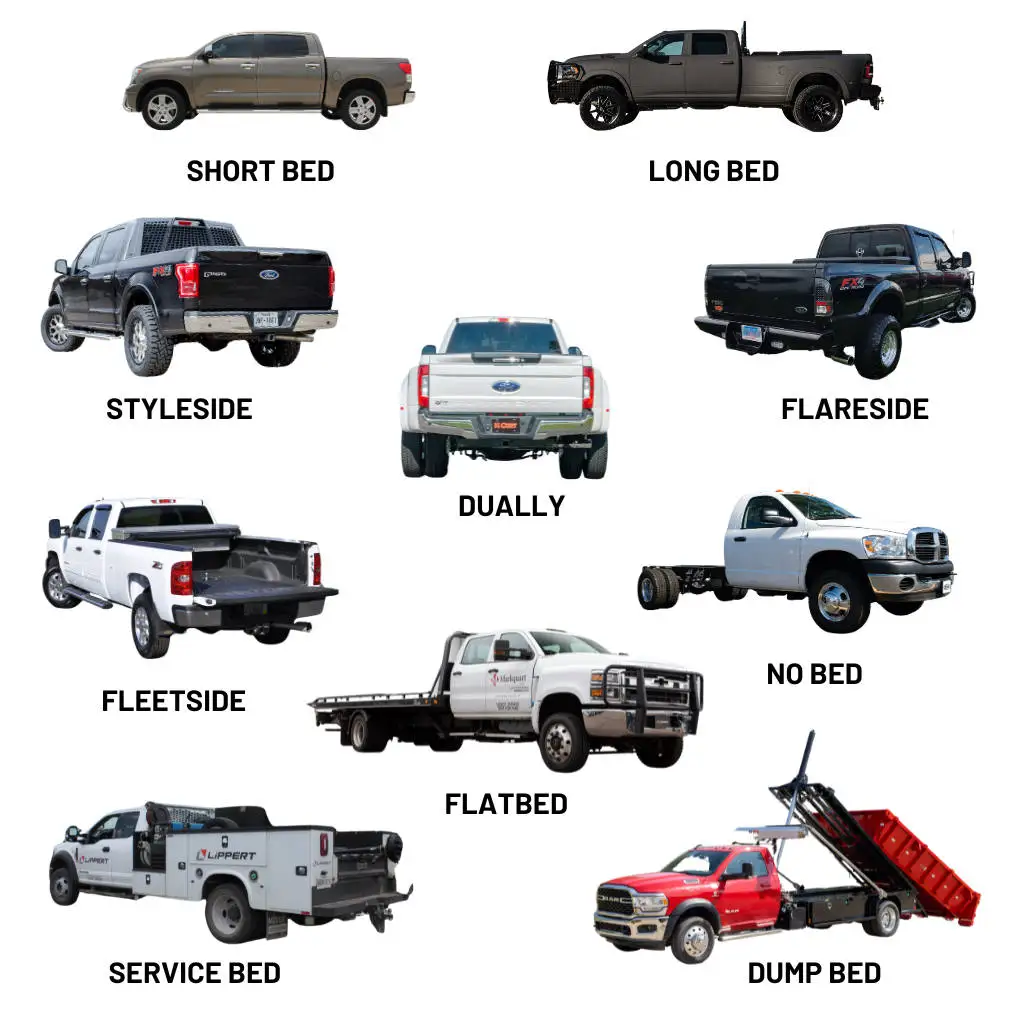

Short Bed
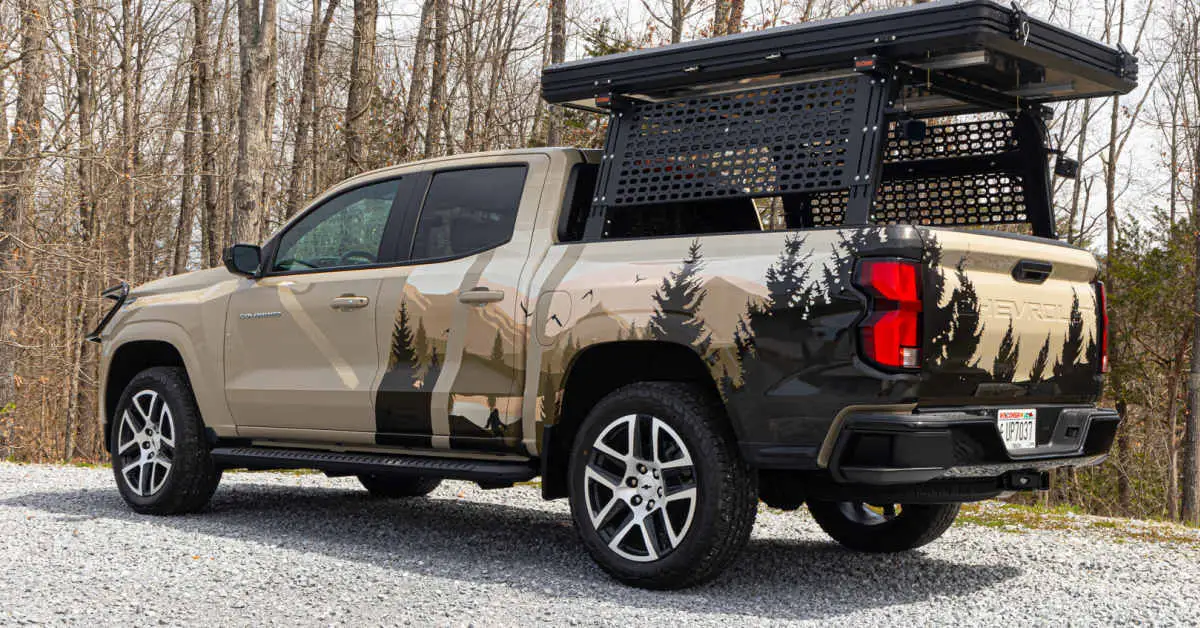

A short bed truck is a pickup truck with a smaller cargo area, typically ranging between 5 to 6.5 feet in length. It is one of the most common bed sizes found on half-ton trucks like the Ford F-150 or Chevrolet Silverado 1500. Short beds offer a balance between cargo space and maneuverability, making them ideal for daily driving and light-duty hauling. Their compact size makes parking and navigating urban environments easier, while still providing enough room for transporting moderate loads, outdoor gear, or equipment.
Best For:
- Daily driving with occasional hauling
- Urban environments where parking and maneuverability matter
Advantages:
- Easier to park and navigate through tight spaces
- Ideal for casual users who don't need a lot of cargo space
Long Bed
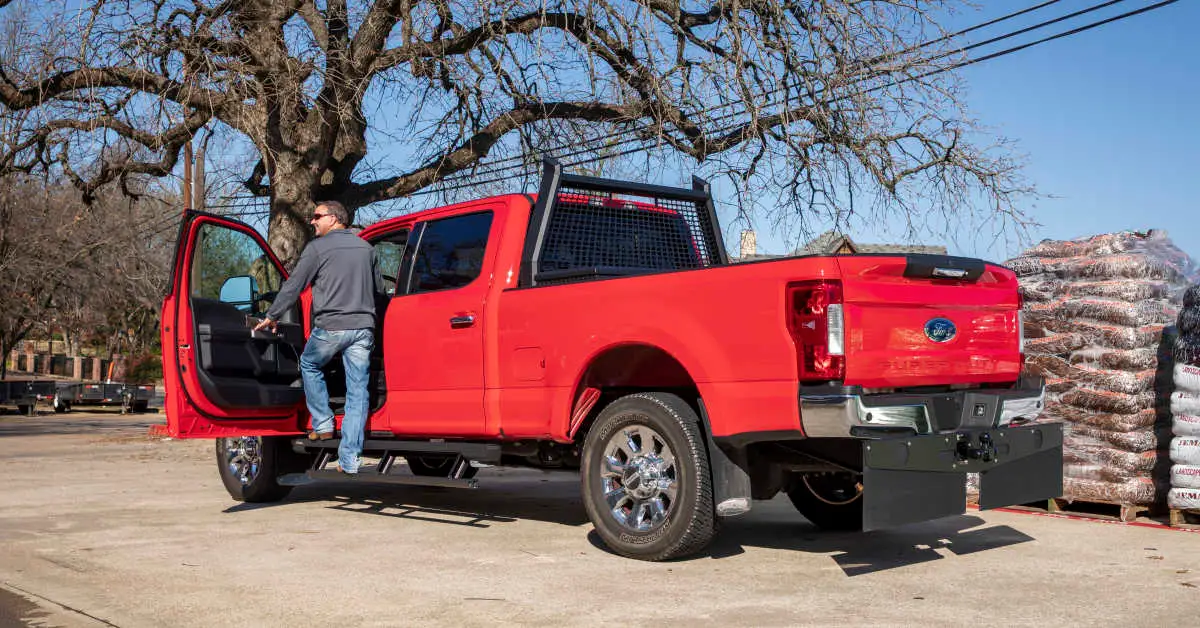

A long bed truck is a pickup truck equipped with an extended cargo bed, typically measuring between 8 to 9 feet in length. Long beds are commonly found on heavy-duty trucks like the Ford Super Duty or Chevrolet Silverado HD, making them ideal for tasks that require hauling large or bulky items, such as construction materials, tools, or equipment. With significantly more cargo space than shorter beds, long-bed trucks are preferred by contractors, tradespeople, and those who regularly tow or transport oversized loads, offering maximum utility and load capacity for demanding jobs.
Best For:
- Construction workers, contractors, and tradespeople
- Long road trips with oversized loads
Advantages:
- Maximum cargo capacity
- Ideal for towing and heavy-duty work
Styleside Bed
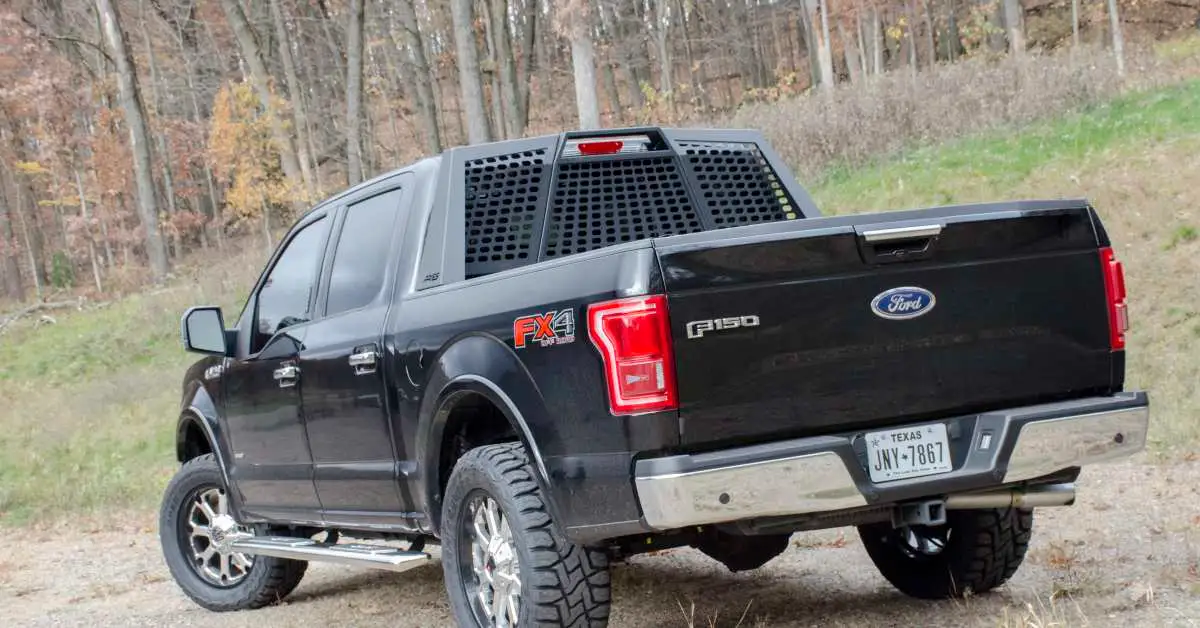

A styleside bed is Ford's term for what is commonly referred to as a fleetside bed in other truck models. It features a wide, rectangular cargo area that extends over the wheel wells, providing maximum width for hauling. This design is standard on most modern Ford trucks, offering a smooth, flat-sided appearance with no exterior protrusions from the fenders. The styleside bed is ideal for general use, as it maximizes cargo space and is versatile enough to handle a wide variety of tasks, from transporting tools and equipment to recreational gear.
Best For:
- Hauling large, wide loads
Advantages:
- Full use of the truck’s bed width
- Preferred look for Ford trucks
Flareside Bed
A flareside bed truck, also known as a stepside bed in some models, features a narrower cargo area with flared or extended rear fenders that sit outside the truck's bed. This design gives the truck a distinctive, classic look, as it eliminates the wheel wells from the bed, leaving a flat, uninterrupted cargo space. Flareside beds are favored by vintage truck enthusiasts for their stylish, retro appearance, but they offer less cargo space compared to fleetside beds. The unique flare design also provides a small step near the wheels, making it easier to access the truck bed.
Best For:
- Classic truck enthusiasts
- Hauling without the worry of cargo getting in the way of the wheel wells
Advantages:
- Unique, retro design that appeals to collectors
- Keeps the bed flat with no wheel well intrusion
Styleside vs. Flareside Truck Beds
While Ford’s styleside maximizes bed capacity, their flareside beds add a rugged, nostalgic aesthetic. Again, the choice between these two comes down to personal style versus practicality.
The primary difference between a styleside bed and a flareside bed lies in their design and cargo capacity. A styleside bed, commonly found on Ford trucks, features a flat, rectangular shape that extends over the wheel wells, maximizing the usable cargo space. In contrast, a flareside bed has visible rear fenders that protrude outside the bed, resulting in a narrower cargo area.
While the flareside design offers a distinctive, vintage aesthetic that appeals to classic truck enthusiasts, it sacrifices some cargo space compared to the styleside configuration. Ultimately, the choice between the two depends on personal preference for style versus practicality in terms of cargo capacity.
Fleetside Bed
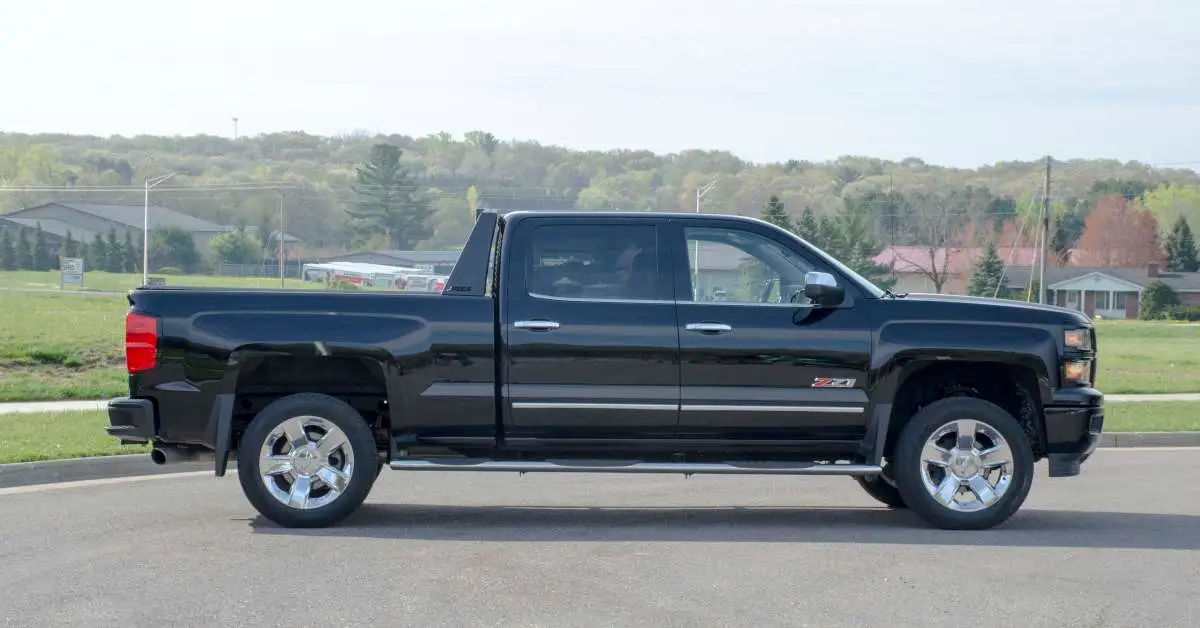

A fleetside bed is the most common type of truck bed, known for its flat, rectangular design that extends over the wheel wells, maximizing the bed's width. This style is sometimes called a styleside in Ford models. Fleetside beds offer a wide, uninterrupted cargo space, making them ideal for hauling large or bulky items. Their simple, versatile design is preferred for general-purpose use, from work tasks to everyday needs, and is standard on many modern pickups, including popular models like the Chevrolet Silverado and Ford F-150. With a fleetside truck bed, you can also add a wheel well tool box to keep your tools and other expensive equipment safe, secure and organized.
Best For:
- General-purpose hauling
- Maximizing cargo volume for large, bulky items
Advantages:
- Most common and versatile truck bed
- Provides more usable cargo space compared to flareside or stepside beds
Stepside Bed
A stepside bed is a type of truck bed where the rear fenders are positioned outside the bed, creating a narrow cargo area with visible steps in front of the rear wheels. This design allows for easier access to the bed, as the built-in steps provide a convenient way to reach into the cargo space. While the bed itself is narrower compared to a fleetside bed, the stepside design has a distinct, vintage appeal and is popular with those who appreciate its classic style. Stepside beds are also known for their clean, sporty look, making them a favorite among truck enthusiasts.
Best For:
- Users who prioritize style and ease of access to cargo
Advantages:
- Convenient step for climbing in and out of the bed
- Unobstructed bed space
Fleetside vs. Stepside Truck Beds
The debate between fleetside vs. stepside largely comes down to preference. Fleetside beds offer more room, thanks to the lack of intruding wheel wells, whereas stepside (or flareside) beds boast a cleaner, more distinctive look, often preferred by vintage truck fans. The difference between a fleetside bed and a stepside bed primarily revolves around their design and functionality.
A fleetside bed features a flat, rectangular shape that extends over the wheel wells, maximizing cargo space and allowing for easier loading and unloading of larger items. In contrast, a stepside bed has fenders that protrude outside the bed, creating a narrower cargo area while also providing built-in steps in front of the rear wheels for easier access to the truck bed.
While fleetside beds are generally more practical for hauling bulky cargo, stepside beds offer a distinctive, classic look that appeals to vintage truck enthusiasts. Ultimately, the choice between the two comes down to personal style preference and specific hauling needs.
Dually Bed
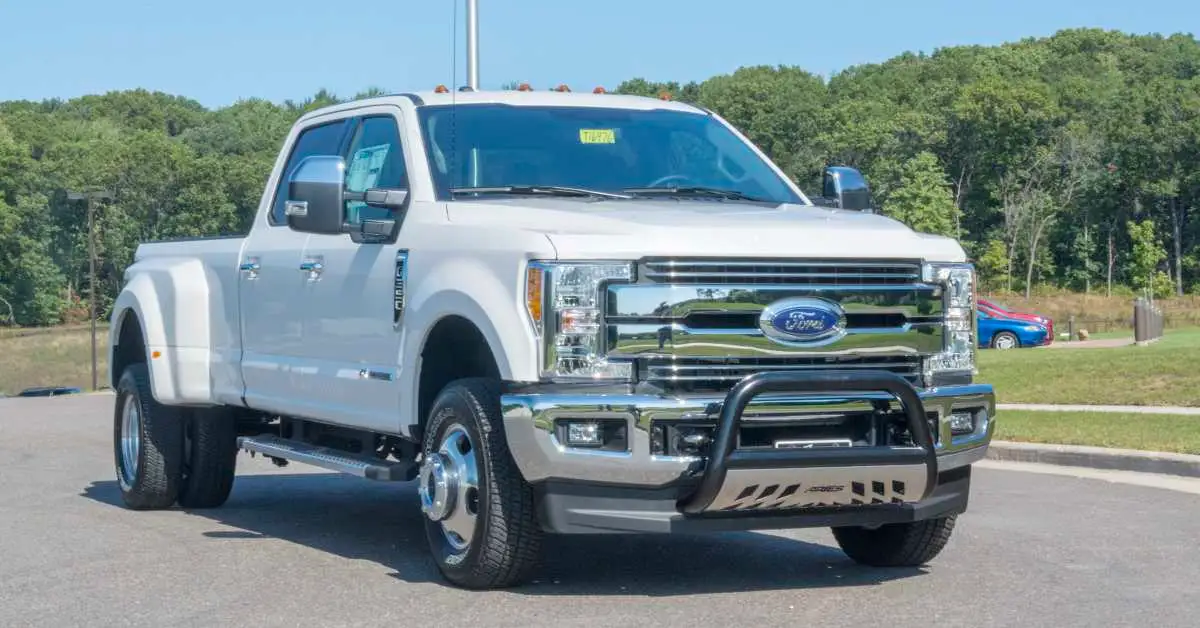

A dually bed is a specialized truck bed designed for heavy-duty applications, characterized by its dual rear wheels on each side. A hallmark of any dually truck is its wide wheel wells which are needed for the dual rear wheels. This configuration significantly increases the truck's stability and payload capacity, making dually beds ideal for towing and hauling heavy loads, such as large trailers, boats, or construction equipment.
Typically found on one ton and larger trucks, dually beds provide enhanced traction and control, especially in challenging driving conditions. Their robust design caters to professionals in the construction, farming, and towing industries, who require the additional strength and stability that a dually truck can offer.
Best For:
- Towing and hauling heavy loads
- Those who need extra stability and control on the road
Advantages:
- Increased payload and towing capacity
- Added stability
Flatbed Trucks
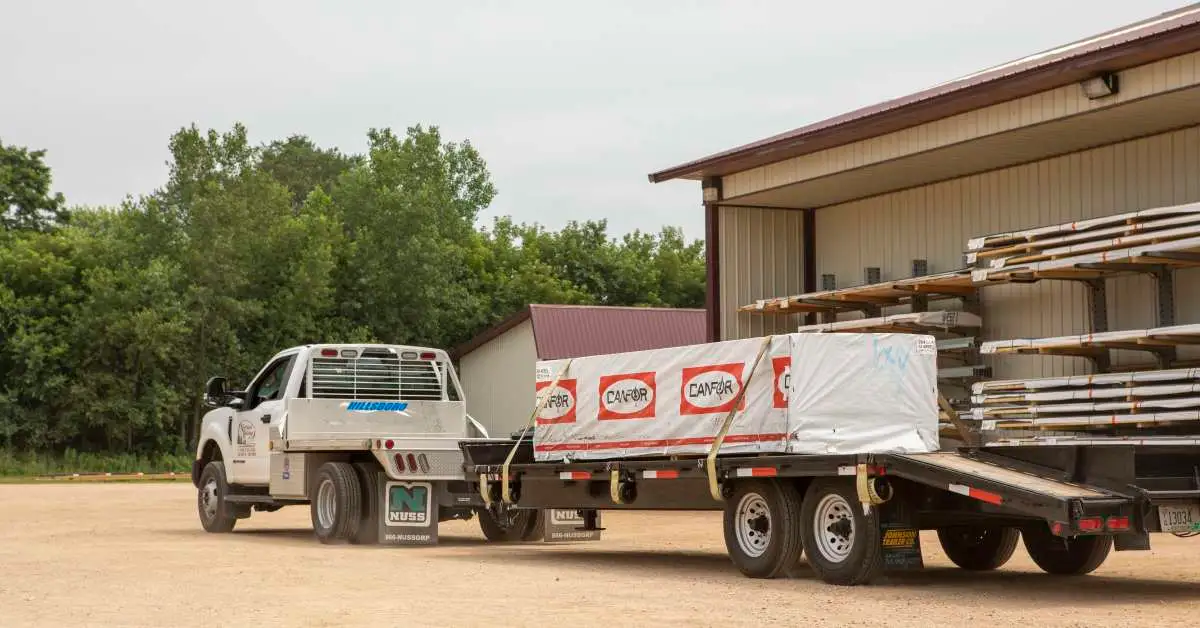

A flatbed is a type of truck bed that has no side walls or tailgate, consisting of a completely flat surface. This design allows for the easy transport of large, oversized, or irregularly shaped cargo that wouldn’t fit in a standard truck bed. Flatbeds are often used in industrial, agricultural, and construction settings because they offer flexibility in loading and unloading from any direction, often with the help of cranes or forklifts.
While lacking the containment of traditional truck beds, flatbeds provide maximum versatility for hauling equipment, materials, or large objects that exceed the dimensions of a standard bed. With a flatbed truck, you can also add a UWS underbody tool box that’s great for storing tools or other equipment for work.
Best For:
- Transporting large or oddly shaped items
- Agricultural or construction work
Advantages:
- Complete flexibility with cargo
- Ideal for work environments where cranes or forklifts are used to load cargo
Service Bed
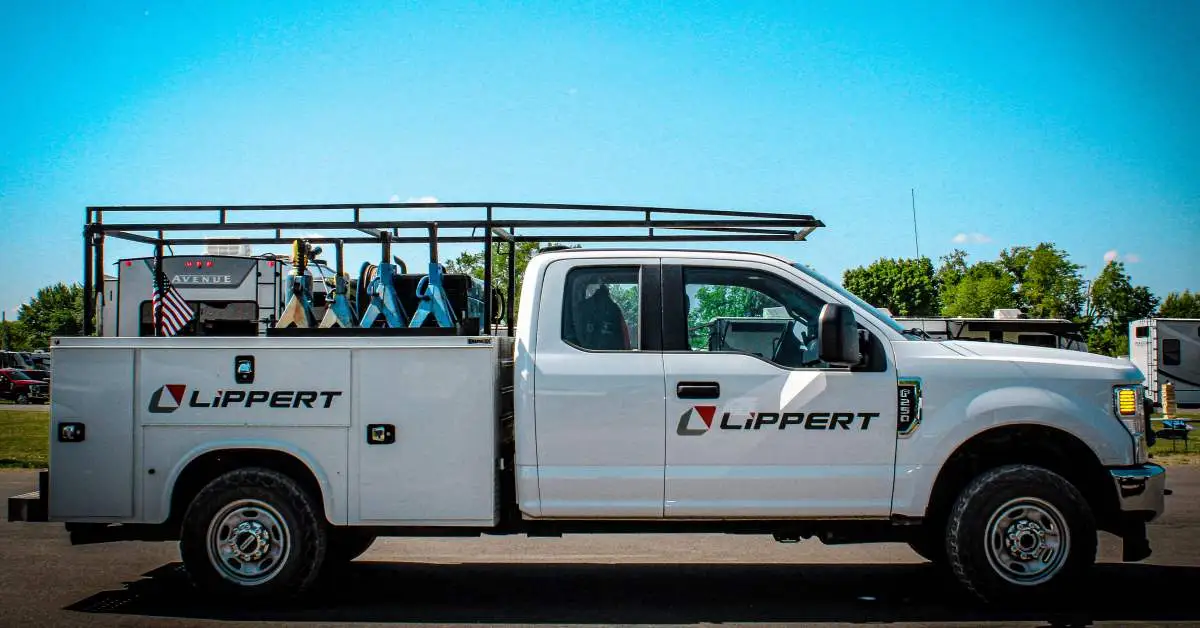

A service bed is a type of truck bed designed specifically for utility and work purposes, featuring multiple storage compartments and drawers for organizing tools and equipment. Commonly used by tradespeople such as electricians, plumbers, and construction workers, service beds provide easy access to tools and supplies, maximizing productivity on the job site.
The compartments are typically lockable, offering security for valuable equipment while the truck is unattended. With a sturdy, practical design, service beds are built to withstand the rigors of daily use, making them an ideal choice for those who require a mobile workspace. Service bed trucks are also compatible with topside tool boxes which are easy to install and leave the truck bed free for other cargo.
Best For:
- Mobile tradespeople who need organized tool storage on the go
Advantages:
- Maximum storage and organization
- Durable and practical for professionals
Dump Bed
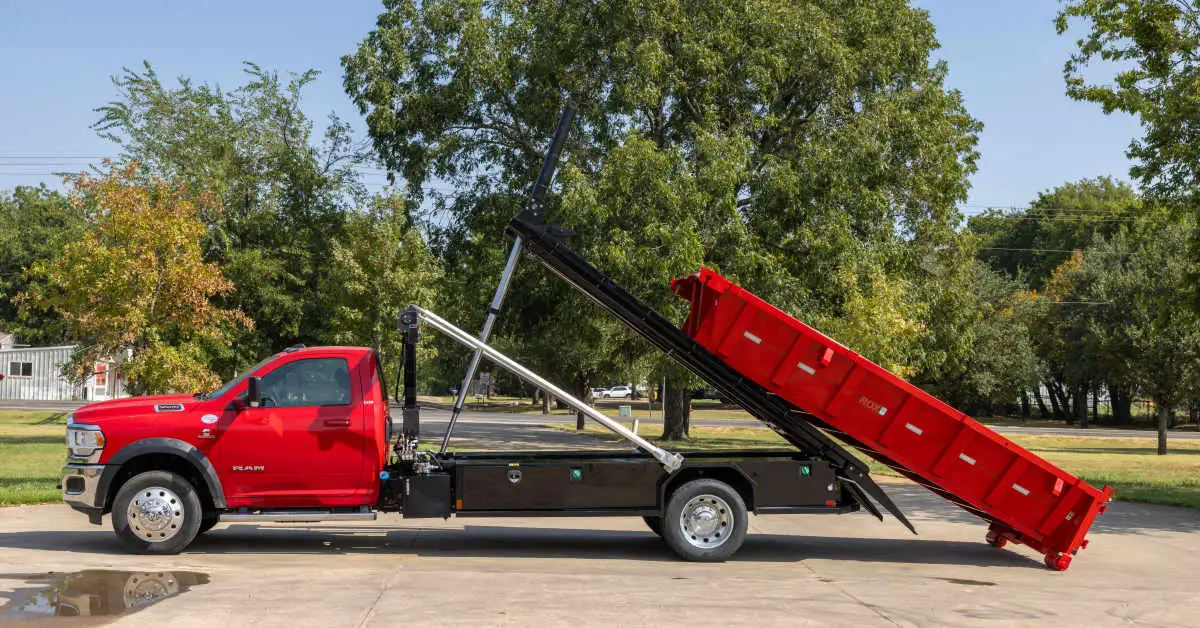

A dump bed is a specialized truck bed equipped with hydraulic lifting capabilities that allow the bed to tilt and dump its contents with ease. This design is particularly popular in construction, landscaping, and agricultural industries where transporting loose materials such as dirt, gravel, or mulch is common.
Dump beds are built to handle heavy loads and facilitate quick unloading, making them essential for jobs that require frequent loading and dumping of materials. It's great for landscapers and construction workers because the hydraulic system can be activated with a simple switch and materials can be unloaded in just minutes.
Best For:
- Hauling loose materials like dirt, gravel, or mulch
Advantages:
- Hydraulic lift for easy unloading
- Ideal for contractors and landscapers
Skirted Bed
A skirted bed is a type of truck bed that features built-in side panels, or "skirts," which provide extra storage compartments integrated into the bed's design. This configuration offers a sleek, professional appearance while maximizing functionality by allowing users to store tools, equipment, or other items securely within the truck's body.
Skirted beds are commonly used in work trucks, where organized storage is essential for tradespeople like electricians or plumbers. The additional compartments help keep gear organized and easily accessible, making skirted beds a practical choice for those who rely on their trucks for daily tasks.
Best For:
- Work trucks needing extra storage space
- Drivers who want a sleek, professional look
Advantages:
- Additional storage
- Sleek appearance
Dropside Bed
A dropside bed is a more specialized truck bed design where the sides of the bed can fold down, allowing for easy access to the cargo from all angles. This type of bed is popular in commercial and utility vehicles, particularly in Europe and Asia, as it simplifies the loading and unloading of large or heavy items. The fold-down sides make it easier to work with bulky or awkwardly shaped cargo, which can be loaded directly from the sides instead of only through the rear tailgate. Dropside beds are ideal for carrying heavy loads like building bricks, pallets, scaffolding poles, and more.
Best For:
- Frequent, large loads that require easy side access
Advantages:
- Increased accessibility
- Makes loading and unloading bulk cargo easier
Puck System Bed
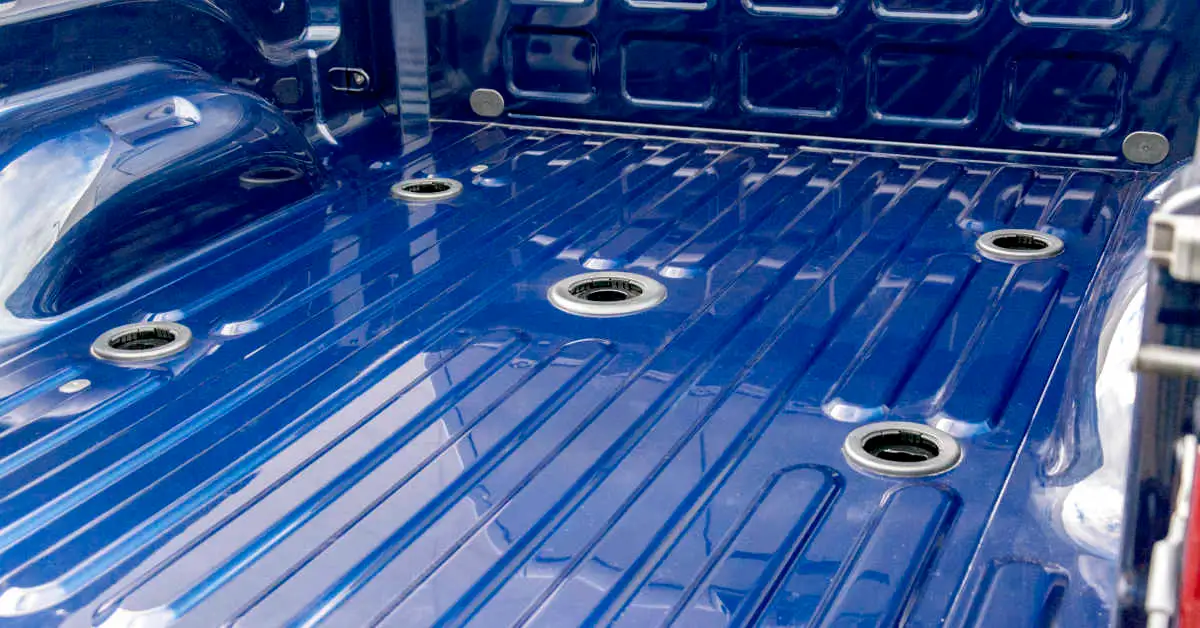

The puck system bed is not technically a bed type, but it’s a significant feature in many modern trucks. It refers to pre-installed mounting points in the bed, often used for 5th wheel or gooseneck towing.
A puck system bed refers to a modern truck bed feature that includes factory-installed mounting points, or "pucks," designed for easy installation of 5th wheel or gooseneck towing setups. These pucks provide a secure and streamlined way to attach towing equipment without the need for drilling or extensive modifications to the truck bed.
This system enhances the truck's versatility, allowing owners to easily switch between different towing configurations while maintaining a clean, uncluttered bed when not in use. Puck systems are commonly found in newer heavy-duty trucks, making them a popular choice for those who frequently tow trailers, RVs, or other large loads.
Best For:
- Towing heavy trailers, RVs, or equipment
Advantages:
- Seamless towing integration
- No need for aftermarket drilling or modifications
Which Truck Bed is Right for Me?
Choosing the right truck bed is all about matching functionality with your unique needs. From compact short beds for urban driving to heavy-duty flatbeds for hauling oversized loads, each truck bed type offers distinct advantages tailored to different lifestyles and work demands.
Whether you’re drawn to the classic appeal of a flareside bed, the practical organization of a service bed, or the high capacity of a dually, understanding your options helps ensure your truck is ready for anything. With the right bed, your truck becomes a true workhorse, built to tackle any task you throw its way. If you’re looking to upgrade your truck bed, UWS offers a variety of truck tool boxes that will fit almost any type of truck bed.
Frequently Asked Questions About Truck Beds
What is a fleetside bed?
A fleetside truck bed is a type of truck bed that's wide and flat, with straight sides that go over the wheels. This shape gives you more room to carry big items. Ford sometimes calls this a "styleside" bed. Fleetside beds are great because they have lots of open space, so people like to use them for all kinds of jobs, like moving things or carrying equipment. You’ll see this type of bed on popular trucks like the Chevy Silverado and Ford F-150.
What is a dually flatbed?
A dually truck bed is specifically designed to fit dual rear wheels on each side of the axle, and these trucks are commonly called "dualies" or "dually trucks."
What is a long truck bed called?
Also known as a "long box," the long bed truck is typically 1 to 2 feet longer than the short bed, providing noticeably more cargo space.
Can I use any truck bed for heavy-duty hauling?
Not all truck beds are suitable for heavy-duty hauling. Long beds, dually beds, flatbeds, and dump beds are designed to handle heavy loads. Short beds and stepside beds are better suited for lighter tasks.
Which truck bed is best for towing?
Dually beds and beds with a puck system are preferred for towing heavy loads. The dually bed’s extra wheels provide stability, while the puck system allows easy attachment of towing equipment.
What’s the purpose of a skirted bed?
A skirted bed includes built-in side panels, or "skirts," which provide extra storage compartments. This design is favored by tradespeople, as it allows for organized storage of tools and equipment within the truck body.
What’s the difference between fleetside and stepside beds?
A fleetside bed has a flat, rectangular design that maximizes cargo space, making it ideal for general hauling. A stepside (or flareside) bed has visible rear fenders outside the bed, providing a narrower cargo area with steps for easier access.
How do I choose the right truck bed for my needs?
Consider your primary use. For example, short beds are better for light hauling and urban driving, long beds for construction or towing, and dually beds for heavy-duty tasks. Flatbeds and service beds are often chosen for industrial or agricultural work.
What are the most common types of truck beds?
The most common types of truck beds are the short bed, long bed, flareside (or stepside), fleetside (or styleside), flatbed, and dually bed. Each type is designed to meet different needs, from daily driving to heavy-duty hauling.
 ARIES
ARIES  CURT
CURT  LUVERNE
LUVERNE  UWS
UWS 



